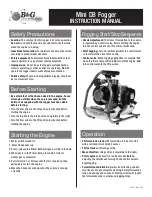
115
Entropy
Safety precautions
Warnings
• Make sure that the electrodes, sensor and connectors do not
touch any electrically conductive material, including earth.
• DEFIBRILLATOR PRECAUTIONS - Patient signal inputs labeled
with the CF and BF symbols with paddles are protected against
damage resulting from defibrillation voltages. To ensure proper
defibrillator protection, use only the recommended cables and
leadwires. Do not reuse the single-use entropy electrodes.
• DEFIBRILLATOR PRECAUTIONS - Proper placement of defibrillator
pads in relation to the electrodes is required to ensure successful
defibrillation.
• In case of spill, take device out of service and have it checked.
Cautions
• When using an electrosurgery unit, ensure proper contact of the
ESU return electrode to the patient to avoid burns at the monitor
measurement sites. Also ensure that the ESU return electrode is
near the operating area.
• Strong 30-40 Hz magnetic fields may cause erroneous Entropy
measurement. Do not use devices with such a field close to the
module or sensor.
• The Entropy measurement is always to be used only as an
adjunct to other physiological parameters. Clinicians are advised
to use their knowledge and experience when making clinical
judgements. Entropy values are not to be used as sole indicators
of the patient status.
• Check the sensor expiration date on the sensor package. Do not
use expired sensors. Do not use a sensor for more than 24 hours.
Note
• Automatic sensor check may need to be disabled if the 70 Hz
impedance check signal interferes with other equipment, such
as EEG module with evoked potentials measurement.
• The device is not compatible with M-ENTROPY module.
Entropy measurement limitations
• Entropy measurement is not indicated for pediatric patients
younger than two years old.
• Entropy is not validated with patients undergoing sedation.
• Unusual or excessive electrical interference is a potential cause
for artifact. During extended periods of electrocautery there may
not be any good EEG epochs, and Entropy values will not be
displayed.
• ECG, frequent eye movements, coughing, muscle rigidity and
patient movement cause artifact and may interfere with the
measurement. Epileptic episodes may also cause interference.
• Entropy readings may be inconsistent when monitoring patients
with neurological disorders, traumas or their sequelae.
• Entropy readings may be inconsistent when using
benzodiazepines, nitrous oxide or ketamine as anesthetics.
• Psychoactive medication or very high opiate doses may
suppress EEG and cause inconsistent Entropy readings.
• Cooling the patient may suppress their EEG and cause
inconsistent Entropy readings.
Содержание B20
Страница 2: ......
Страница 18: ...14 E Entropy module 1 Module keys 2 Entropy connector 1 2 ...
Страница 76: ...72 For your notes ...
Страница 78: ...74 For your notes ...
Страница 86: ...82 For your notes ...
Страница 104: ...100 ...
Страница 124: ...120 For your notes ...
Страница 159: ......
















































